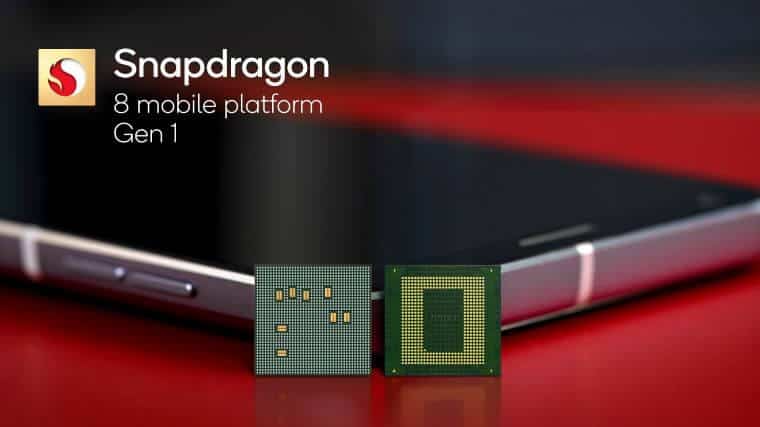The News: Qualcomm’s Snapdragon 8 Gen 1 Mobile Platform has been tapped to power Samsung’s newest lineup of flagship devices including the Galaxy S22 smart phone in select regions and the Galaxy Tab S8 series globally. The cutting-edge mobile platform will enable 5G and other advanced technologies. Qualcomm’s FastConnect 6900 Mobile Connectivity System will also be featured in the devices enabling advanced WiFi. Read the full press release from Qualcomm.
Qualcomm’s Snapdragon 8 Tapped to Power Samsung’s Newest Devices
Analyst Take: During Samsung’s Galaxy Unpacked 2022 event, the company rolled out a number of new devices as part of its flagship Galaxy line. The Galaxy S22 and a trio of tablets that are part of the Galaxy Tab S8 ecosystem will soon hit the market to compete with iPhones and iPads. And while the specs of the devices themselves are impressive — bigger screens, higher resolutions, more storage, etc. — the fact that Samsung tapped Qualcomm to continue to power their mobile devices speaks volumes.
The Snapdragon Series 8 Gen 1 Mobile Platform was announced at the end of November and since then it has been included in a handful of devices by companies like Xiaomi and Motorola in a few devices, but the chipset hasn’t full gone mainstream — until now. The inclusion in the Samsung Galaxy line-up will give these Android devices a much needed boost for speed and connectivity and could potentially help Samsung compete with the intention of winning market share from Apple in the ultra premium tier.
What We Can Expect from These Devices
According to Qualcomm, the Galaxy S22 series will have improved connectivity across 5G, WiFi and Bluetooth. The 4th gen Snapdragon X65 5G Modem-RF system will provide faster speeds and work with more networks, frequencies, and bandwidths globally. The Qualcomm FastConnect 6900 Mobile Connectivity System will enable faster WiFi connectivity speeds and sustained low latency performance. All combined to make these devices some of the fastest and most powerful on the market. The promise of Android devices that can compete with the top of the line iPhone continues to be of great interest to the markets. On a global scale, Android continues to be the preferred OS, however, in the U.S. devices like the S22 are the most likely to compete with Apple’s dominant market share.
Both the Galaxy S22 and the Galaxy Tab S8 will utilize a few different advances in Qualcomm technology. Qualcomm’s Adreno GPU will provide a boost to graphics rendering will reducing the impact it has on battery making these devices better suited for applications like gaming. With gaming continuing to be a sought after capability, I like these devices for the combination of powerful gaming capabilities with long-lasting battery life. These devices will also be equipped with a Qualcomm Hexagon processor for faster tensor accelerator speeds and more memory which will enable a number of different uses for these devices as more technologies like AI, VR, and AR emerge. Can’t build for the future without having an XR approach to address potential metaverse applications.
This announcement today continues to demonstrate Qualcomm’s strong positioning for being the engine behind many ultra premium Android devices (and downward tiers as well). I’m confident we will be seeing a greater subset of Android device manufacturers tap the Snapdragon Series 8 Gen 1 platform to power their next set of top end mobile devices in the coming months.
Disclosure: Futurum Research is a research and advisory firm that engages or has engaged in research, analysis, and advisory services with many technology companies, including those mentioned in this article. The author does not hold any equity positions with any company mentioned in this article.
Other insights from Futurum Research:
Qualcomm and Ferrari Enter Strategic Collaboration
Image Credit: PCMag
Author Information
Daniel is the CEO of The Futurum Group. Living his life at the intersection of people and technology, Daniel works with the world’s largest technology brands exploring Digital Transformation and how it is influencing the enterprise.
From the leading edge of AI to global technology policy, Daniel makes the connections between business, people and tech that are required for companies to benefit most from their technology investments. Daniel is a top 5 globally ranked industry analyst and his ideas are regularly cited or shared in television appearances by CNBC, Bloomberg, Wall Street Journal and hundreds of other sites around the world.
A 7x Best-Selling Author including his most recent book “Human/Machine.” Daniel is also a Forbes and MarketWatch (Dow Jones) contributor.
An MBA and Former Graduate Adjunct Faculty, Daniel is an Austin Texas transplant after 40 years in Chicago. His speaking takes him around the world each year as he shares his vision of the role technology will play in our future.







